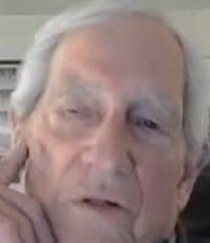This is a summary of last week’s reading.
I’ve mentioned previously that I feel a need to wrap-up my series of posts on deeper generative organizing. One way of saying it is that: “There is no formula, except this is a formula.”1 As soon as we rely on formulas, procedures, and defined processes, we become fixed. The follow-up question, then, is whether formulas can be generative? I’ll come back to that.

Last week, I finished reading The Phenomenon of Life by Hans Jonas. This is a classic book on phenomenology and existentialism. At the center of Jonas’ philosophy is an attack on the fundamental assumptions underlying modern philosophy since Descartes. Hans Jonas’ critique of cybernetics caught my attention:
According to cybernetics, society is a communication network for the transmitting, exchanging, and pooling of information, and it is this that holds it together. No emptier notion of society has ever been propounded. Nothing is said on what the information is about, and why it should be relevant to have it. … Any theory of man’s sociability, however crude or distorted, that takes into account his being a creature of need and desire, and that looks for the vital concerns which bring men together, is more to the point.2
Hans Jonas emphasizes the importance of the concept of good.3 Action, whether individual or collective, is directed toward a good. Here, I see a connection with Robert S. Hartman’s seminal work on The Structure of Value.

I started reading The Safety Anarchist by Sidney Dekker. It’s a compelling book, which is as much about work in general, as about safety. Sidney Dekker writes that:
It is time for…people who trust people more than process, who rely on horizontally coordinating experiences and innovations, who push back against petty rules and coercive compliance, and who help recover the dignity and expertise of human work.4

I have also started reading When the Impossible Happens by Stanislav Grof. Grof presents a personal account of over 50 years of inquiry into holotropic states of consciousness, one that provides a glimpse into the deeper layers of our existence. Stanislav Grof mentions wu wei, which, I think, is related to generative organizing:
…wu wei, or “creative quietude,”…is not action involving ambitious determined effort, but doing by being. … Instead of focusing on a predetermined fixed goal, we try to sense which way things are moving and how we best fit into them. It involves focus on the process, rather than the goal or the outcome. When we are able to approach life in this way, we ultimately achieve more and with less effort. In addition, our activities are not egocentric, exclusive, and competitive… The outcome not only brings satisfaction to us, but serves also a larger purpose of the community.5

I have started re-reading Christopher Alexander’s four volume masterwork on The Nature of Order. I am now reading Book One. Christopher Alexander has come to believe that architecture is so agonizingly disturbed because of our conception of the world, a worldview that essentially makes it impossible to make buildings well.
I believe that we have in us a residue of a world-picture which is essentially mechanical in nature–what we might call the mechanist-rationalist world-picture. … Like an infection it has entered us, it affects our actions, it affects our morals, it affects our sense of beauty. It controls the way we think…6
Alexander writes about built structures, but what he says is as applicable to Life itself.

Harrison Owen is one of my favorite authors. Harrison Owen’s insights are deep and he writes very well. In short, he is a pleasure to read. Last week, I found this interview with Harrison Owen by Keli Yen at Global Greens. The following caught my attention:
The most productive work groups that I’ve ever seen have virtually no prescribed structure. … This is going to sound totally heretical, but think about it, structure is very simply a figment of our imagination. … It’s all energy, it’s all flow. … So in a way, structure is kind of a crutch to allow us to think we have some control and understanding of the environment we’re in.7

This leads me back to Christopher Alexander’s built structures. Alexander says in The Timeless Way of Building that his pattern language is fallible, and that you cannot generate a living thing mechanically.8
…it is only the extent to which you yourself become ordinary and natural, that in the end determines how natural, and free, and whole the building can become. …
One place can have “good” patterns in it, and yet be dead. …
Another place can be without the patterns which apply to it, and yet still be alive.9
And, here’s my point, a pattern is a formula. Hence, formulas aren’t generative, in the sense of being able to generate a living thing. Deeper generative organizing, then, is not about prescribing patterns or structures, but about following your heart.
…live so close to your heart that you no longer need a [pattern] language…
It is utterly ordinary. It is what is in you already. Your first, most primitive impulses are right, and will lead you to do the right thing, if you only let yourself. … It is only a question of whether you will allow yourself…to do what comes naturally to you, and what seems most sensible, to your heart, always to your heart, not to the images which false learning has coated on your mind.10
Do what comes naturally to your heart, always to your heart!
Notes
1 I attribute this statement to Skye Hirst, who said it in one of our conversations. It’s as I remember it. It might be a paraphrase.
2 Hans Jonas, The Phenomenon of Life, pp. 126–27.
3 Hans Jonas, The Phenomenon of Life, p. 127.
4 Sidney Dekker, The Safety Anarchist, p. iii.
5 Stanislav Grof, When the Impossible Happens, p. 66.
6 Christopher Alexander, The Nature of Order: Book One, p. 7.
7 Keli Yen, Harrison Owen Interview: Inviting Flow and Self Organization | Global Greens (accessed 2020-01-08)
8 Christopher Alexander, The Timeless Way of Building, pp. 540–41.
9 Ibid., pp. 541–42.
10 Ibid., p. 547.
Leave a Reply
You must be logged in to post a comment.